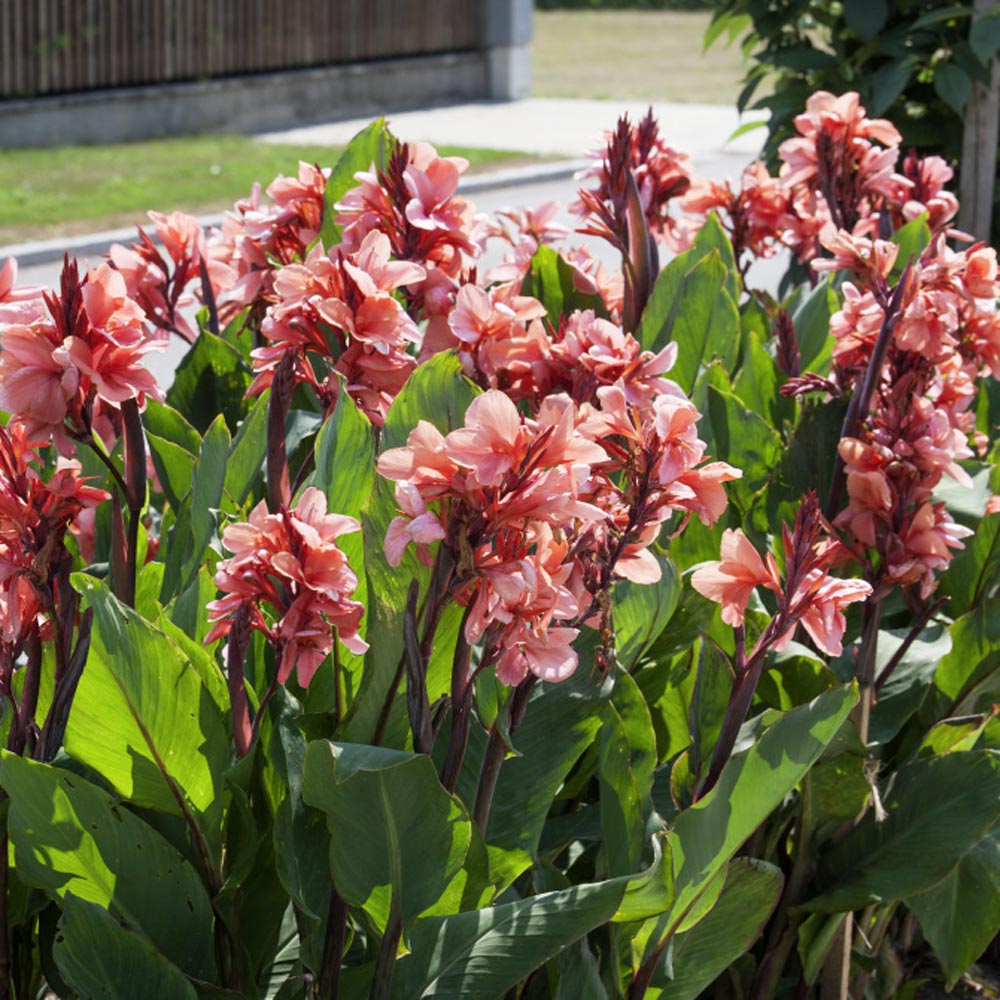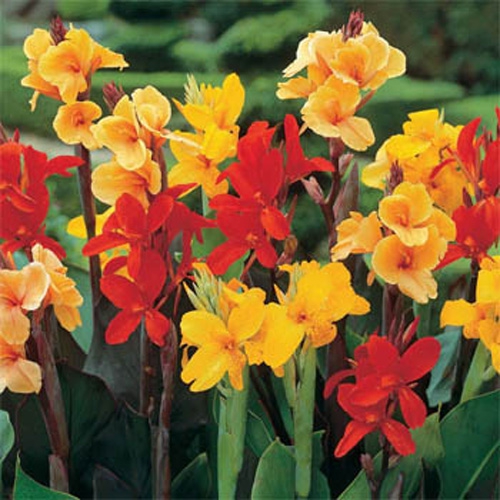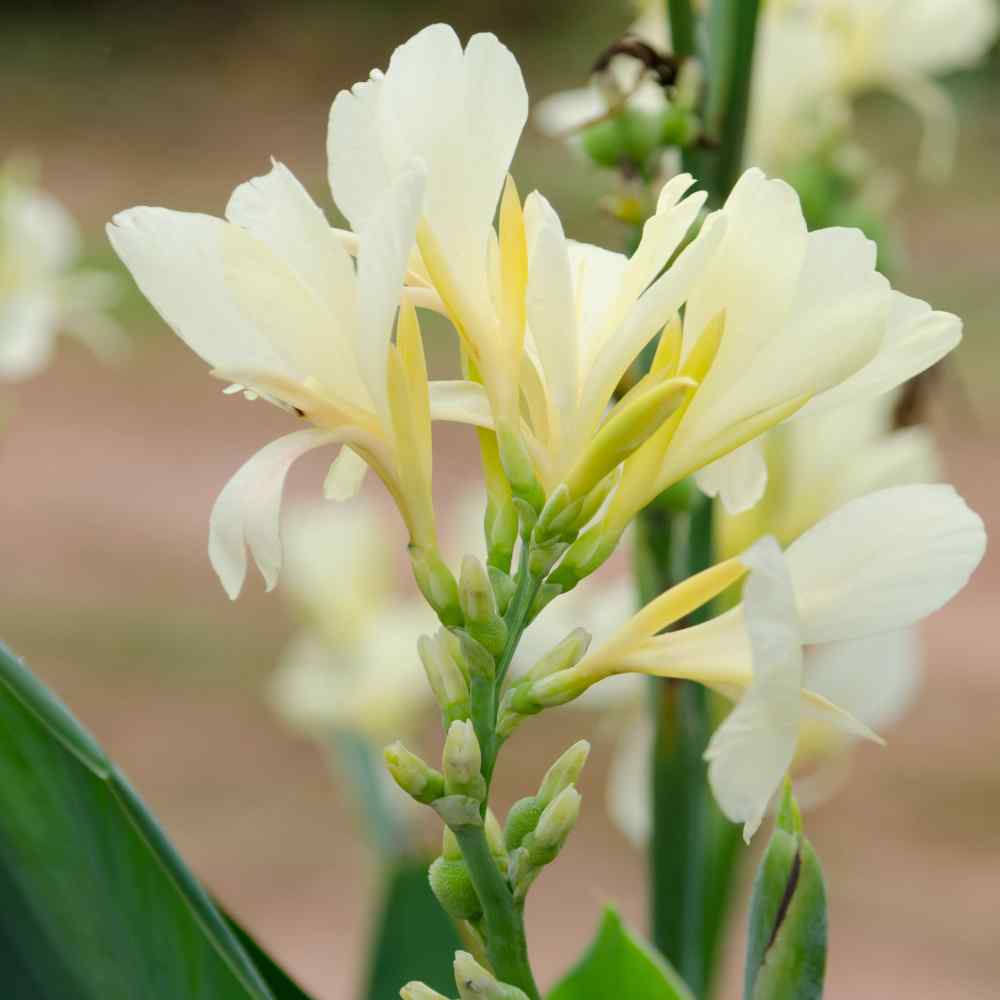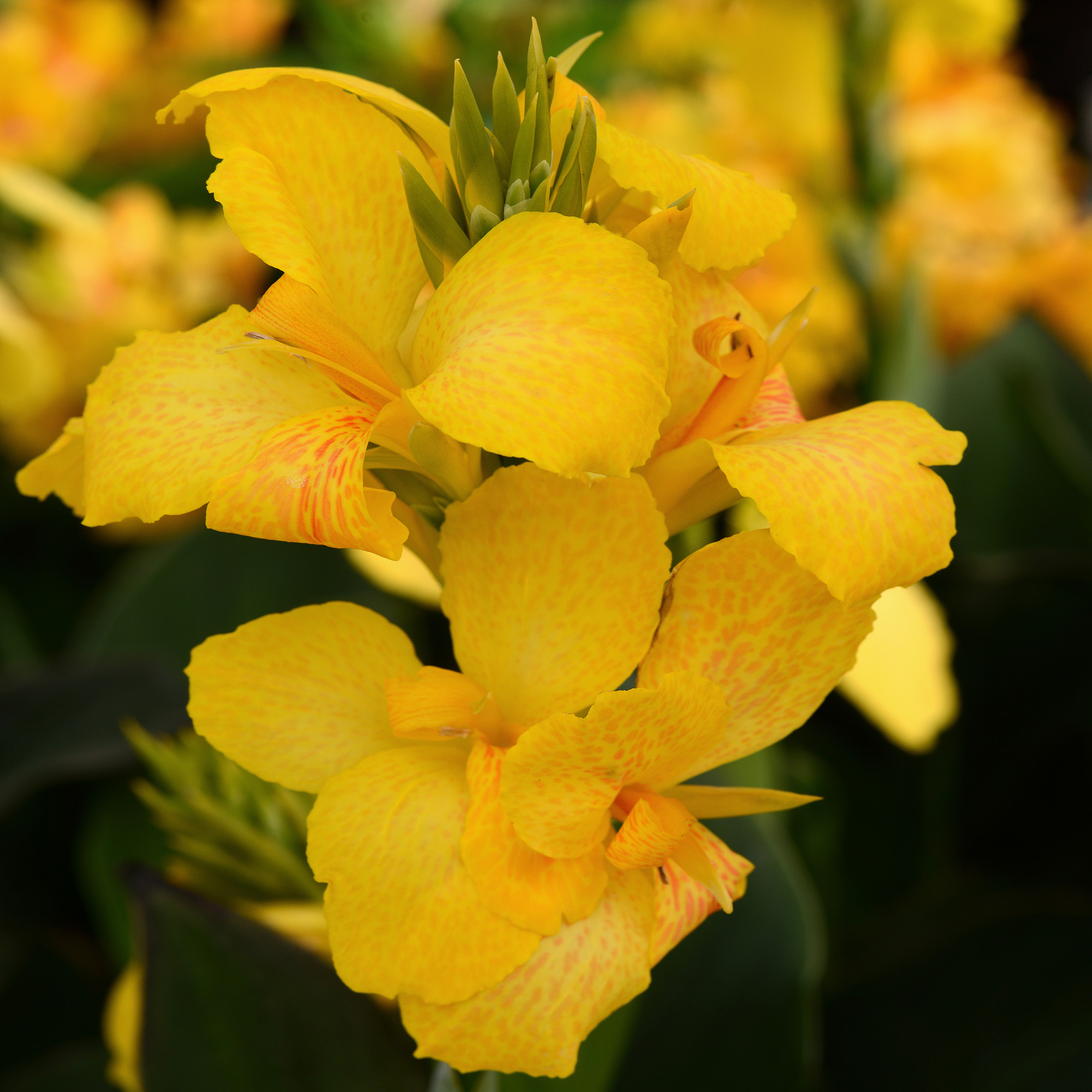
Canna Planting Guide
Quick Facts About Canna
Canna flowers are stunning as short-term cut flowers, typically lasting only a day. On the other hand, Canna foliage has a longer lifespan and can complement enduring blooms in arrangements. Also known as Indian Shot, Canna thrives in moist environments, making it perfect for waterside settings such as ponds and pools. While not resilient beyond zone 7, it excels as an annual flowering plant. Some Canna varieties may bloom within just 90 days after planting the seeds.
Planting Time
Sow indoors in March. Nicking the seed coat and soaking seed 48 hours can help improve germination.

Planting Location
Plant in full sun with moist, well-drained soil.
How to Plant Canna
- Sow indoors in March. Nicking the seed coat and soaking seed 48 hours can help improve germination.
- Plant 1- 2 seeds per 11 inch pot or large cell tray 1/4 inch deep in seed starting mix.
- Keep moist until germination at 70 - 75 degrees.
- Once seedlings sprout, ensure they receive plenty of light by placing them on a sunny windowsill or positioning them 3-4 inches below fluorescent plant lights that are switched on for 16 hours daily and off for 8 hours at night. Adjust the lights as the plants grow taller. Avoid using incandescent bulbs as they generate excessive heat. Remember, most plants need a period of darkness to thrive, so do not keep the lights on for 24 hours.
- Seedlings do not need much fertilizer, feed when they are 3-4 weeks old using a starter fertilizer at half strength of a complete indoor houseplant food according to manufacturer’s directions.
- Before transplanting, seedlings need to be “hardened off”. Accustom young plants to outdoor conditions by moving them to a sheltered place outside for a week. Be sure to protect them from wind and hot sun at first. If frost threatens at night, cover or bring containers indoors, then take them out again in the morning. This hardening off process toughens the plant’s cell structure and reduces transplant shock and scalding.
- When transplanting choose a location in full sun with rich, well-drained soil.
- You can either plant into the garden 9 to 18 inches apart or containers.

Care And Maintenance
- Maintain weed control throughout the growing season. Weeds can compete with plants for water, space, and nutrients, so it's essential to manage them by regular cultivation or by applying mulch to stop their seeds from sprouting.
- Mulches play a crucial role in retaining soil moisture and regulating soil temperatures consistently. When dealing with annual plants, using organic mulch made from shredded leaves can enhance the appearance of the bed naturally and enrich the soil as it decomposes over time. Remember to avoid placing mulch directly against a plant's stems to avoid potential rot issues.
- For optimal growth, plants typically require around 1 inch of rain per week throughout the growing season. To determine if additional watering is necessary, utilize a rain gauge. It is advisable to use a drip or trickle system that dispenses water at low pressure directly at soil level. If employing overhead sprinklers, water early in the day to allow foliage to dry before evening, reducing the risk of disease. Maintain soil moisture at an adequate level without over-saturating it.
- After new growth emerges, consider applying a light fertilizer. To prevent burn injuries, keep granular fertilizers away from the plant crown and foliage. Opt for low doses of a slow-release fertilizer, as excessive amounts may promote root rots.
- Remove spent flower heads to keep plants flowering until fall.
- Monitor for pests and diseases. Check with your local Cooperative Extension Service for pest controls recommended for your area.
- Cannas flourish in zones 8-10 and require excavation and storage in colder regions during winter. Following the first frost, gently dig about 12 inches from the plant to prevent damage to the rhizome, then lift the cluster from the soil. As the season progresses, Cannas may grow, producing larger rhizomes than the ones initially planted. Rinse the roots, trim the foliage, allow the rhizome to dry, and store it in a location with a temperature ranging from 45 to 60 degrees.
- Cannas bring a striking tropical appearance to any garden. While taller cannas work well as herbaceous hedges, smaller varieties are perfect for container gardening.
- Flowers are great for cutting.




































